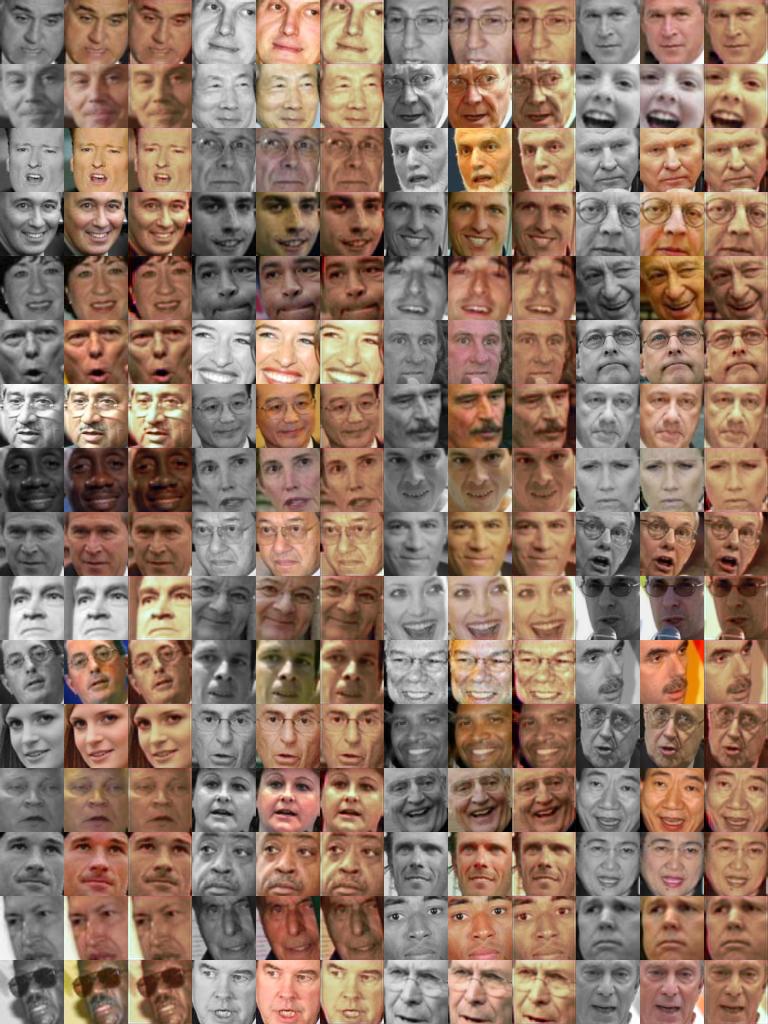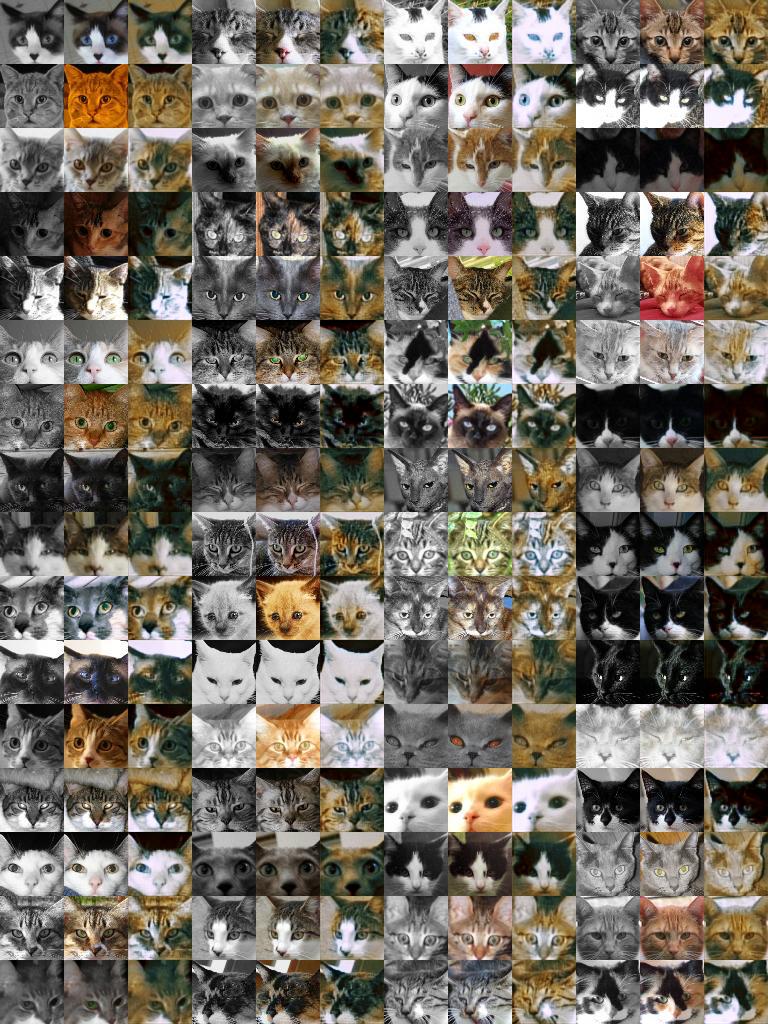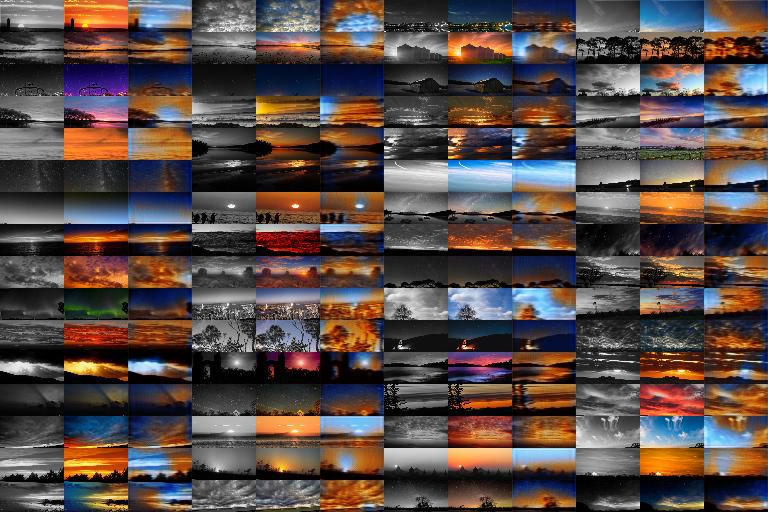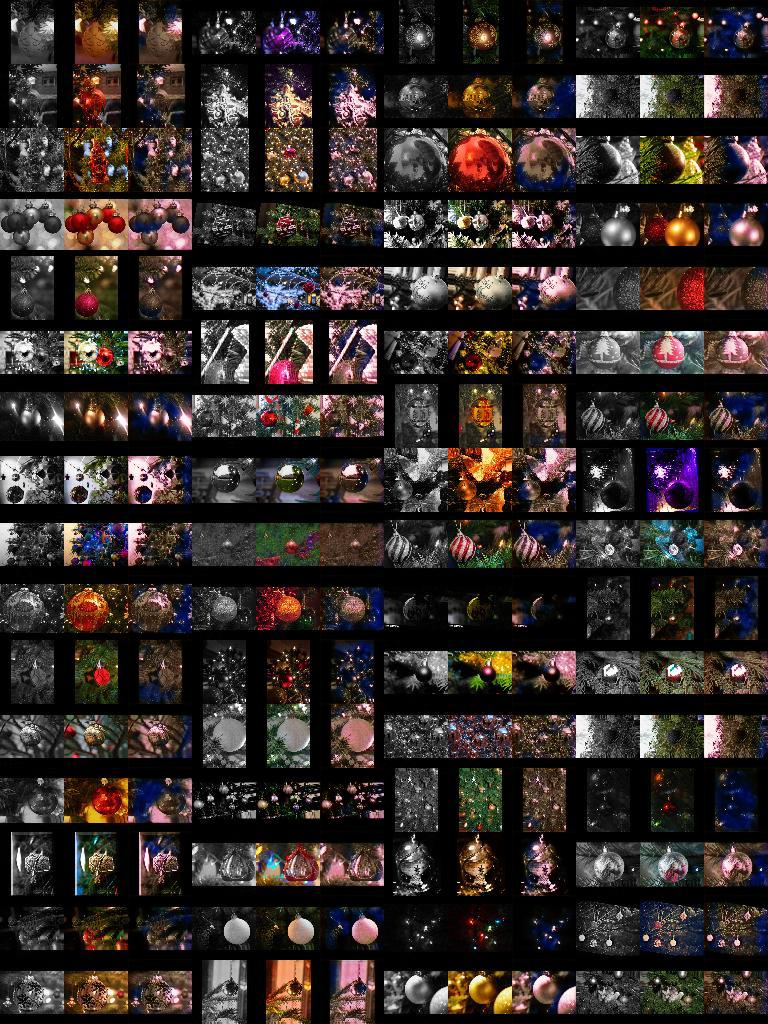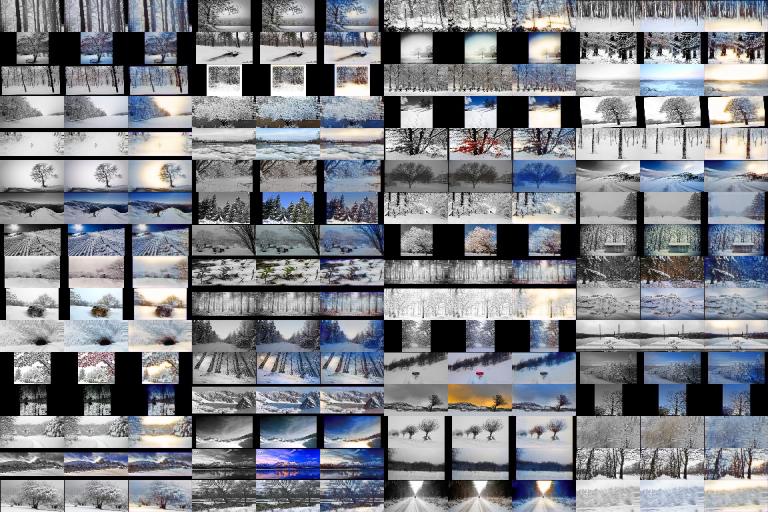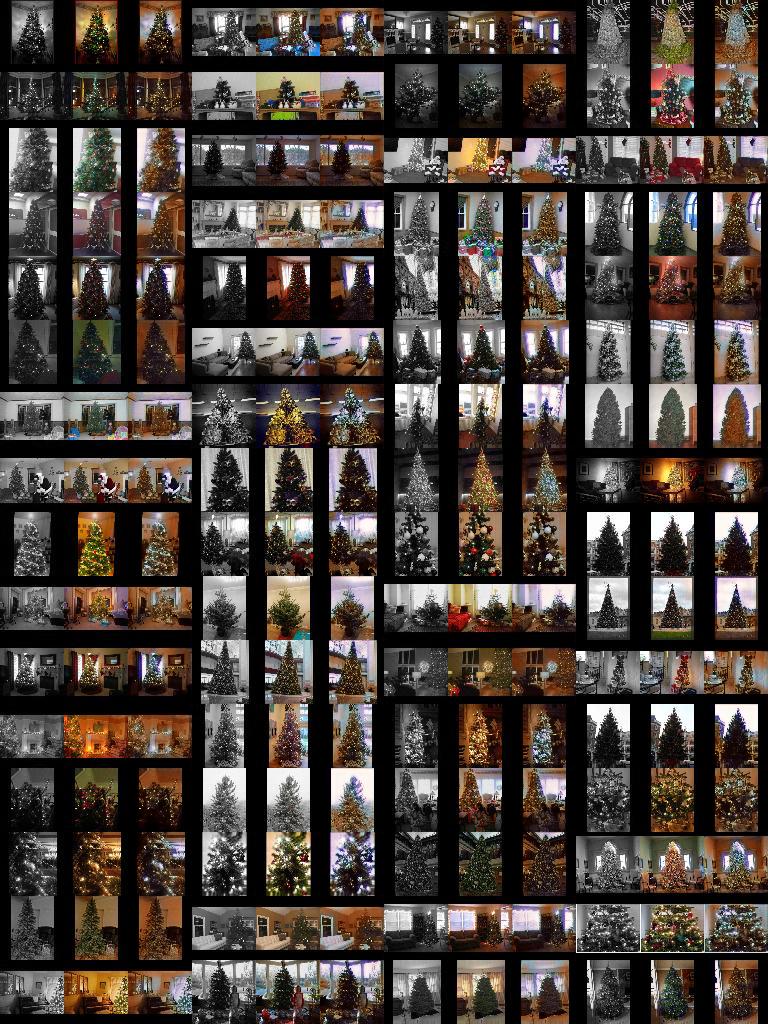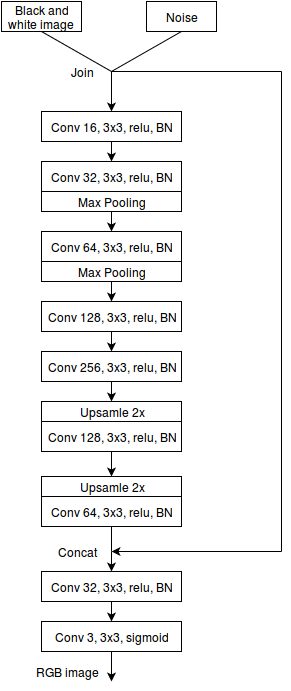aleju / Colorizer
Programming Languages
Labels
Projects that are alternatives of or similar to Colorizer
About
This project uses GANs (generative adversarial networks) to add color to black and white images. For each such image, the generator network (G) receives its black and white version and outputs a full RGB version of the image (i.e. the black and white image with color added to it). That RGB version is then rated (in regards to its quality) by the discriminator (D). The quality measure is backpropagated through D and then through G. Thereby G can learn to correctly colorize images. The architectures used are modifications of the DCGAN schema. See this blog post for an alternative version, which uses standard convnets (i.e. no GANs) with VGG features.
Key results:
- If a dataset of images can be generated by a GAN, then a GAN can also learn to add colors to it.
- The task of adding colors seems to be a bit easier than the full generation of images.
- G did not learn to add colors to rather rare and small elements (e.g. when coloring images of christmas trees it didn't add color to presents below the trees, small baubles or clothes of people in the image). This might partly be a limitation of the architecture, which uses pooling layers in G (hence small elements might get lost).
- G did not learn to correctly add colors to datasets with high variance (heterogeneous collections of images). It would resort to mostly just adding one or two colors everywhere.
- I experimented with using VGG features but didn't have much success with those. G didn't seem to learn more than without VGG features. My tests were limited though due to hardware constraints (VGG + G + D = three big networks in memory). It did not try the hypercolumn that was used in the previously mentioned blog post.
- Producing UV values in G and combining them with Y to an YUV image (which is then fed into D) failed. G just wouldn't learn anything. G had to output full RGB images to learn successfully. Not sure if there was a bug somewhere or if there's a good reason for that effect.
Images
Colorizers were trained on multiple image datasets which were reused from previous projects. (I.e. multiple GANs were trained, not just one for all images. That's due to GANs not being very good at handling heterogeneous datasets.) Besides of the datasets shown below, the MSCOCO 2014 validation dataset was also used, but G failed to learn much on that one (it added mostly just 1-3 uniform colors per image), hence the results of that run are not shown.
Notes:
- There were no splits into training and validation sets (partly due to laziness, partly because GANs in my experience basically never just memorize the training set). Note how the coloring in the images below is often different from the original coloring.
- Training times were usually quite fast (<=2 hours per dataset).
- All generated color images were a little bit blurry, probably because G generated full RGB images instead of just adding color (UV in YUV). As such, it has to learn to copy the Y channel information correctly while still adding colors.
Human faces
This dataset worked fairly well. Notice the image in the 10th row at the far right. G assigns a skin color to the microphone. Also notice how G usually doesn't add red color to the lips. Maybe they get lost during the pooling...?
For each tuple: (left) Original image in black and white, (middle) original image in color, (right) Color added by G.
Cat faces
This dataset worked fairly well.
For each tuple: (left) Original image in black and white, (middle) original image in color, (right) Color added by G.
Skies
Here G created sometimes weird mixtures of blue and orange. They were not visible in earlier epochs, but those then had weird vertical stripes around the borders of the images.
For each tuple: (left) Original image in black and white, (middle) original image in color, (right) Color added by G.
Baubles
This dataset already caused problems when I tried to generate it (i.e. full image generation, not just colorization). It didn't work too well here either. Baubles often remained colorless. I had to carefully select the optimal epoch to generate half decent images. There are blue blobs in some of the images. These blobs become bigger if the experiment is run longer.
For each tuple: (left) Original image in black and white, (middle) original image in color, (right) Color added by G.
Snowy landscapes
Here G only had to either keep the black and white image or add some blue color, fairly easy task. It mostly learned that and sometimes exaggerated the blue (e.g. by adding it to trees).
For each tuple: (left) Original image in black and white, (middle) original image in color, (right) Color added by G.
Christmas trees
This dataset worked fairly well. When zooming in you can see that G doesn't add color to presents, baubles and people's clothings. E.g. for baubles look at row=9, col=3, for clothes row=8, col=1 and for presents row=1, col=2 (indices starting at 1).
For each tuple: (left) Original image in black and white, (middle) original image in color, (right) Color added by G.
Architecture
The architecture of D was a standard convolutional neural net with one small fully connected layer at the end, mostly ReLU activations and some spatial dropout.
G is an upsampling generator, similar to what is described in the DCGAN paper. Before the upsampling part it has an image analyzation part, similar to a standard convolutional network. The analyzation part takes the black and white image and tries to make sense of it with some convolutional and pooling layers. The black and white image is fed into the network for a second time towards the end so that the analyzation and upsampling parts can focus on the color and don't have to transfer the Y channel information through the layers. The noise layer is fed into the network both at the start and the end for technical simplicity (it just gets joined with the black and white image).
Architecture of G. The formulation "Conv K, 3x3, relu, BN" denotes a convolutional layer with K kernels/planes, each with filter size 3x3, ReLU activation and batch normalization. Max pooling is over a 2x2 area. Upsampling layers increase height and width each by a factor of 2. The noise layer and the black and white image usually both have size 1x64x64.
D had about 3 million parameters (exact value depends on the input image size), G about 0.8 million.
Usage
Requirements are:
- Torch
- Required packages (most of them should be part of the default torch install, install missing ones with
luarocks install packageName):cudnn,nn,pl,paths,image,optim,cutorch,cunn,cudnn,dpnn,display
- Required packages (most of them should be part of the default torch install, install missing ones with
- Image datasets have to be downloaded from previous projects and will likely require Python 2.7. You can however use your own dataset, provided that the images in that one are square or have an aspect ratio of 2.0 (e.g. height=64, width=32). Other ratios might work but haven't been tested.
- NVIDIA GPU with cudnn3 and 4GB or more memory
To train a network:
-
~/.display/run.js &- This will startdisplay, which is used to plot results in the browser - Open http://localhost:8000/ in your browser (
displayinterface) - Open a console in the repository directory and then
th train_rgb.lua --dataset="DATASET_PATH" --height=64 --width=64, whereDATASET_PATHis the filepath to the directory containing all your images (must be jpg).heightandwidthresemble the size of the generated images. Your source images in that directory may be larger (e.g. 256x256). Only 32x32 (height x width), 64x64 and 32x64 were tested. Other values might result in errors. Note: Training keeps running until stopped manually with ctrl+c.
To continue a training session use th train_rgb.lua --dataset="DATSET_PATH" --height=64 --width=64 --network="logs/adversarial.net".
To sample images (i.e. colorize images from the training set) use th sample.lua (should automatically reuse dataset directory, height and width).

